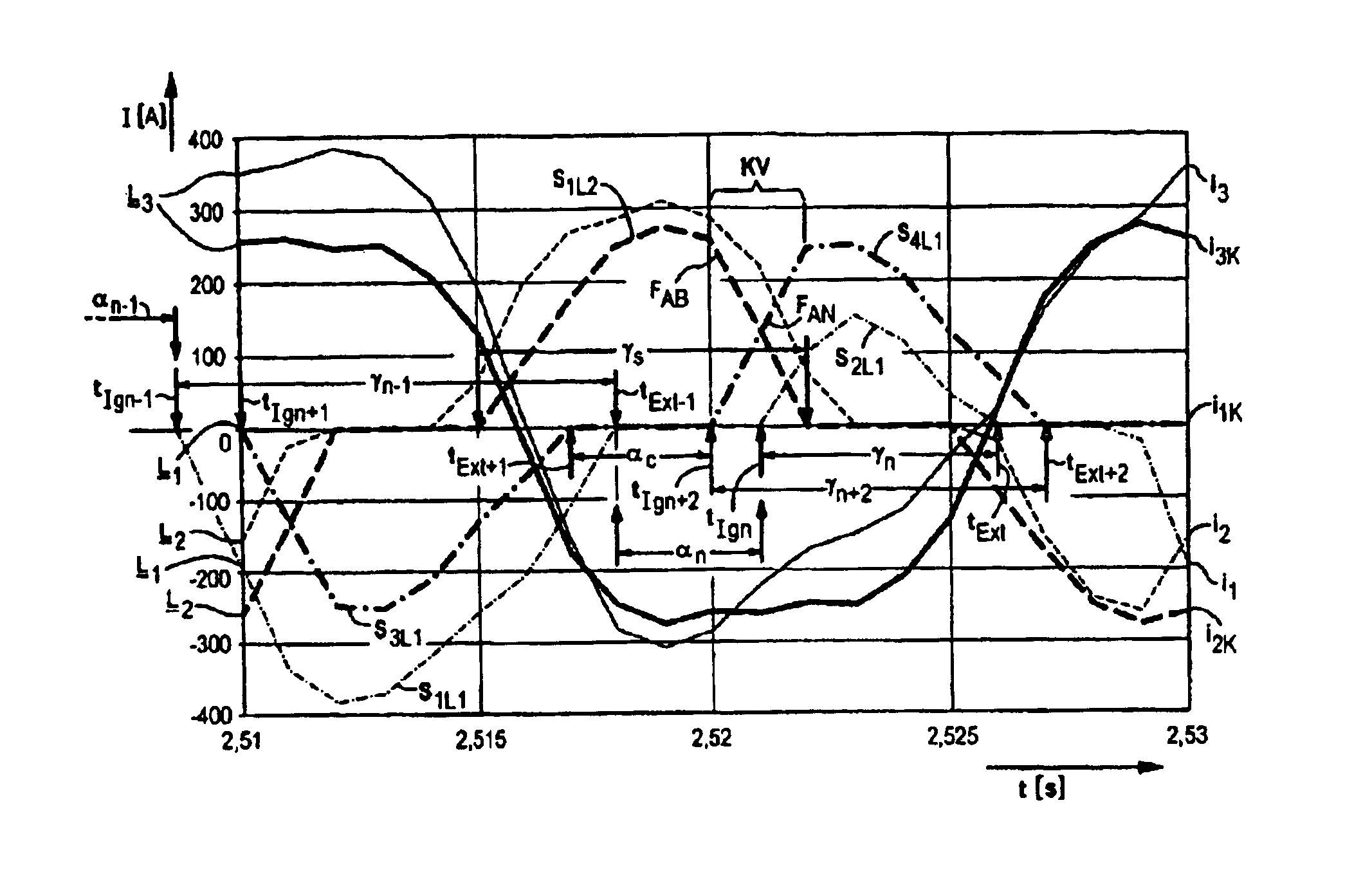Method for reducing the influence of a DC current component in the load current of an asynchronous motor
a technology of asynchronous motors and components, applied in the direction of motor/generator/converter stoppers, dynamo-electric converter control, dynamo-electric gear control, etc., can solve the problems of hard or completely impossible soft start of motors, and achieve uniform rise and profile
- Summary
- Abstract
- Description
- Claims
- Application Information
AI Technical Summary
Benefits of technology
Problems solved by technology
Method used
Image
Examples
Embodiment Construction
[0014]FIG. 1 uses a diagram to show the time profile of a three-phase current during starting of an asynchronous machine using a two-phase three-phase controller, before and after the use of a first method for reducing the influence of a DC component. This illustration shows a current i1 and i2 in a first and a second controlled phase L1 and L2, respectively, as well as a current i3 in a third, uncontrolled phase L3, in each case having pronounced DC components.
[0015]Furthermore, the currents i1 and i2 have a respectively associated current i1K and i2K corrected according to the method, and the current i3 has an associated current i3K, which is influenced by the correction according to the method, all in phase. In order to control the phases L1 to L3, the phase gating is supplied by a function that can be determined via a ramp, in particular a linear ramp.
[0016]The first method for reducing the influence of the DC component provides that, first of all, the current flow angle γn−1 in...
PUM
 Login to View More
Login to View More Abstract
Description
Claims
Application Information
 Login to View More
Login to View More - R&D
- Intellectual Property
- Life Sciences
- Materials
- Tech Scout
- Unparalleled Data Quality
- Higher Quality Content
- 60% Fewer Hallucinations
Browse by: Latest US Patents, China's latest patents, Technical Efficacy Thesaurus, Application Domain, Technology Topic, Popular Technical Reports.
© 2025 PatSnap. All rights reserved.Legal|Privacy policy|Modern Slavery Act Transparency Statement|Sitemap|About US| Contact US: help@patsnap.com



